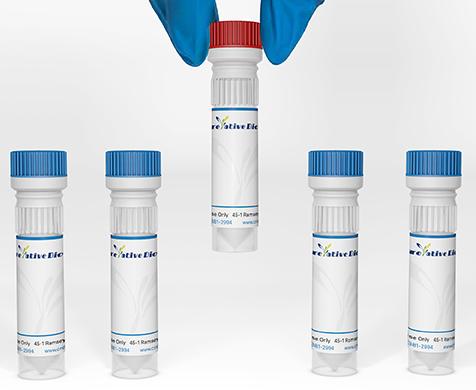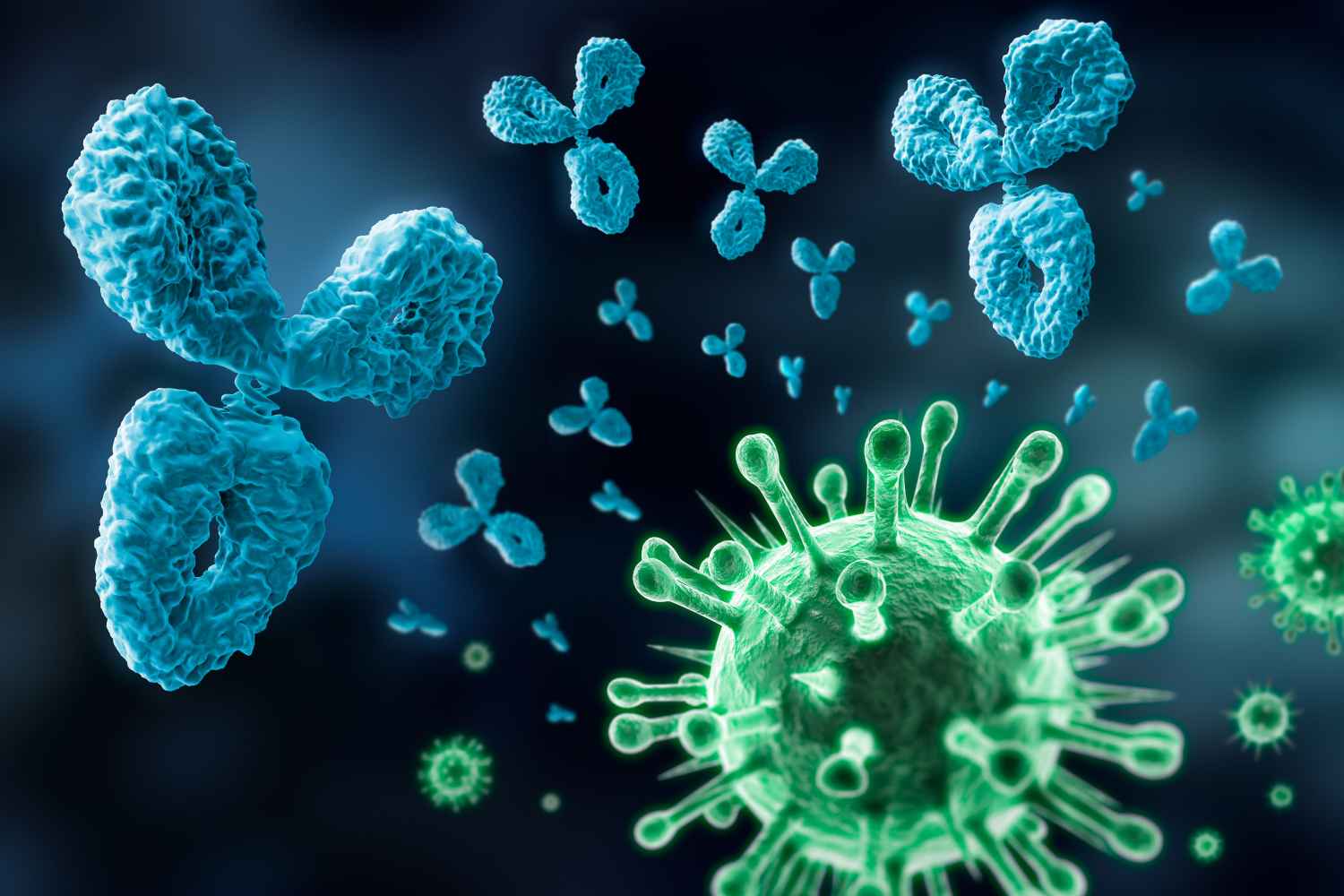POLG
POLG (DNA Polymerase Gamma, Catalytic Subunit) is a protein coding gene. Diseases associated with POLG include Sensory Ataxic Neuropathy, Dysarthria, And Ophthalmoparesis and Mitochondrial Dna Depletion Syndrome 4A. Among its related pathways are Cell Cycle Control of Chromosomal Replication and Metabolism. Gene Ontology annotations related to this gene include nucleic acid binding and protease binding.
Full Name
DNA Polymerase Gamma, Catalytic Subunit
Function
Involved in the replication of mitochondrial DNA. Associates with mitochondrial DNA.
Biological Process
Base-excision repair, gap-fillingManual Assertion Based On ExperimentIDA:MGI
DNA metabolic processManual Assertion Based On ExperimentTAS:ProtInc
DNA-templated DNA replicationManual Assertion Based On ExperimentIDA:UniProtKB
Mitochondrial DNA replicationManual Assertion Based On ExperimentIDA:ComplexPortal
DNA metabolic processManual Assertion Based On ExperimentTAS:ProtInc
DNA-templated DNA replicationManual Assertion Based On ExperimentIDA:UniProtKB
Mitochondrial DNA replicationManual Assertion Based On ExperimentIDA:ComplexPortal
Cellular Location
Mitochondrion
Mitochondrion matrix, mitochondrion nucleoid
Mitochondrion matrix, mitochondrion nucleoid
Involvement in disease
Progressive external ophthalmoplegia with mitochondrial DNA deletions, autosomal dominant, 1 (PEOA1):
A disorder characterized by progressive weakness of ocular muscles and levator muscle of the upper eyelid. In a minority of cases, it is associated with skeletal myopathy, which predominantly involves axial or proximal muscles and which causes abnormal fatigability and even permanent muscle weakness. Ragged-red fibers and atrophy are found on muscle biopsy. A large proportion of chronic ophthalmoplegias are associated with other symptoms, leading to a multisystemic pattern of this disease. Additional symptoms are variable, and may include cataracts, hearing loss, sensory axonal neuropathy, ataxia, depression, hypogonadism, and parkinsonism.
Progressive external ophthalmoplegia with mitochondrial DNA deletions, autosomal recessive, 1 (PEOB1):
A severe form of progressive external ophthalmoplegia, a disorder characterized by progressive weakness of ocular muscles and levator muscle of the upper eyelid. It is clinically more heterogeneous than the autosomal dominant forms.
Sensory ataxic neuropathy dysarthria and ophthalmoparesis (SANDO):
A systemic disorder resulting from mitochondrial dysfunction associated with mitochondrial depletion in skeletal muscle and peripheral nerve tissue. The clinical triad of symptoms consists of sensory ataxic neuropathy, dysarthria, and ophthalmoparesis. However, the phenotype varies widely, even within the same family, and can also include myopathy, seizures, and hearing loss.
Mitochondrial DNA depletion syndrome 4A (MTDPS4A):
An autosomal recessive hepatocerebral syndrome due to mitochondrial dysfunction. The typical course of the disease includes severe developmental delay, intractable seizures, liver failure, and death in childhood. Refractory seizures, cortical blindness, progressive liver dysfunction, and acute liver failure after exposure to valproic acid are considered diagnostic features. The neuropathological hallmarks are neuronal loss, spongiform degeneration, and astrocytosis of the visual cortex. Liver biopsy results show steatosis, often progressing to cirrhosis.
Mitochondrial DNA depletion syndrome 4B (MTDPS4B):
An autosomal recessive progressive multisystem disorder due to mitochondrial dysfunction. It is clinically characterized by chronic gastrointestinal dysmotility and pseudo-obstruction, cachexia, progressive external ophthalmoplegia, axonal sensory ataxic neuropathy, and muscle weakness.
Leigh syndrome (LS):
An early-onset progressive neurodegenerative disorder characterized by the presence of focal, bilateral lesions in one or more areas of the central nervous system including the brainstem, thalamus, basal ganglia, cerebellum and spinal cord. Clinical features depend on which areas of the central nervous system are involved and include subacute onset of psychomotor retardation, hypotonia, ataxia, weakness, vision loss, eye movement abnormalities, seizures, and dysphagia.
Spinocerebellar ataxia with epilepsy (SCAE):
An autosomal recessive syndrome characterized by headaches and/or seizures manifesting in childhood or adolescence, cerebellar and sensory ataxia, dysarthria, and myoclonus manifesting in early adulthood. Neuropathological findings include spinocerebellar degeneration associated with cortical neuronal degeneration in advanced cases.
A disorder characterized by progressive weakness of ocular muscles and levator muscle of the upper eyelid. In a minority of cases, it is associated with skeletal myopathy, which predominantly involves axial or proximal muscles and which causes abnormal fatigability and even permanent muscle weakness. Ragged-red fibers and atrophy are found on muscle biopsy. A large proportion of chronic ophthalmoplegias are associated with other symptoms, leading to a multisystemic pattern of this disease. Additional symptoms are variable, and may include cataracts, hearing loss, sensory axonal neuropathy, ataxia, depression, hypogonadism, and parkinsonism.
Progressive external ophthalmoplegia with mitochondrial DNA deletions, autosomal recessive, 1 (PEOB1):
A severe form of progressive external ophthalmoplegia, a disorder characterized by progressive weakness of ocular muscles and levator muscle of the upper eyelid. It is clinically more heterogeneous than the autosomal dominant forms.
Sensory ataxic neuropathy dysarthria and ophthalmoparesis (SANDO):
A systemic disorder resulting from mitochondrial dysfunction associated with mitochondrial depletion in skeletal muscle and peripheral nerve tissue. The clinical triad of symptoms consists of sensory ataxic neuropathy, dysarthria, and ophthalmoparesis. However, the phenotype varies widely, even within the same family, and can also include myopathy, seizures, and hearing loss.
Mitochondrial DNA depletion syndrome 4A (MTDPS4A):
An autosomal recessive hepatocerebral syndrome due to mitochondrial dysfunction. The typical course of the disease includes severe developmental delay, intractable seizures, liver failure, and death in childhood. Refractory seizures, cortical blindness, progressive liver dysfunction, and acute liver failure after exposure to valproic acid are considered diagnostic features. The neuropathological hallmarks are neuronal loss, spongiform degeneration, and astrocytosis of the visual cortex. Liver biopsy results show steatosis, often progressing to cirrhosis.
Mitochondrial DNA depletion syndrome 4B (MTDPS4B):
An autosomal recessive progressive multisystem disorder due to mitochondrial dysfunction. It is clinically characterized by chronic gastrointestinal dysmotility and pseudo-obstruction, cachexia, progressive external ophthalmoplegia, axonal sensory ataxic neuropathy, and muscle weakness.
Leigh syndrome (LS):
An early-onset progressive neurodegenerative disorder characterized by the presence of focal, bilateral lesions in one or more areas of the central nervous system including the brainstem, thalamus, basal ganglia, cerebellum and spinal cord. Clinical features depend on which areas of the central nervous system are involved and include subacute onset of psychomotor retardation, hypotonia, ataxia, weakness, vision loss, eye movement abnormalities, seizures, and dysphagia.
Spinocerebellar ataxia with epilepsy (SCAE):
An autosomal recessive syndrome characterized by headaches and/or seizures manifesting in childhood or adolescence, cerebellar and sensory ataxia, dysarthria, and myoclonus manifesting in early adulthood. Neuropathological findings include spinocerebellar degeneration associated with cortical neuronal degeneration in advanced cases.
View more
Anti-POLG antibodies
+ Filters
 Loading...
Loading...
Target: POLG
Host: Rabbit
Antibody Isotype: IgG
Specificity: Human, Monkey
Clone: D1Y6R
Application*: WB, IP
Target: POLG
Host: Rabbit
Antibody Isotype: IgG
Specificity: Human
Clone: CBYCD-495
Application*: WB
Target: POLG
Host: Mouse
Antibody Isotype: IgG1
Specificity: Human, Mouse
Clone: 3H16
Application*: E, WB
More Infomation
Hot products 
-
Mouse Anti-APP Recombinant Antibody (5C2A1) (CBMAB-A3314-YC)

-
Mouse Anti-ATG5 Recombinant Antibody (9H197) (CBMAB-A3945-YC)

-
Mouse Anti-DLL4 Recombinant Antibody (D1090) (CBMAB-D1090-YC)

-
Mouse Anti-ABIN2 Recombinant Antibody (V2-179106) (CBMAB-A0349-YC)

-
Mouse Anti-8-oxoguanine Recombinant Antibody (V2-7719) (CBMAB-1898CQ)

-
Mouse Anti-CRYAB Recombinant Antibody (A4345) (CBMAB-A4345-YC)

-
Mouse Anti-CD46 Recombinant Antibody (CBFYC-0076) (CBMAB-C0085-FY)

-
Mouse Anti-BAD (Phospho-Ser136) Recombinant Antibody (CBYY-0138) (CBMAB-0139-YY)

-
Mouse Anti-AQP2 Recombinant Antibody (E-2) (CBMAB-A3358-YC)

-
Mouse Anti-CAT Recombinant Antibody (724810) (CBMAB-C8431-LY)

-
Mouse Anti-ACTB Recombinant Antibody (V2-179553) (CBMAB-A0870-YC)

-
Mouse Anti-CASQ1 Recombinant Antibody (CBFYC-0863) (CBMAB-C0918-FY)

-
Mouse Anti-ACE2 Recombinant Antibody (V2-179293) (CBMAB-A0566-YC)

-
Mouse Anti-ESR1 Recombinant Antibody (Y31) (CBMAB-1208-YC)

-
Rat Anti-CD63 Recombinant Antibody (7G4.2E8) (CBMAB-C8725-LY)

-
Mouse Anti-CSPG4 Recombinant Antibody (CBFYM-1050) (CBMAB-M1203-FY)

-
Mouse Anti-ACO2 Recombinant Antibody (V2-179329) (CBMAB-A0627-YC)

-
Mouse Anti-BIRC3 Recombinant Antibody (16E63) (CBMAB-C3367-LY)

-
Mouse Anti-ADIPOR2 Recombinant Antibody (V2-179983) (CBMAB-A1369-YC)

-
Mouse Anti-BSN Recombinant Antibody (219E1) (CBMAB-1228-CN)

For Research Use Only. Not For Clinical Use.
(P): Predicted
* Abbreviations
- AActivation
- AGAgonist
- APApoptosis
- BBlocking
- BABioassay
- BIBioimaging
- CImmunohistochemistry-Frozen Sections
- CIChromatin Immunoprecipitation
- CTCytotoxicity
- CSCostimulation
- DDepletion
- DBDot Blot
- EELISA
- ECELISA(Cap)
- EDELISA(Det)
- ESELISpot
- EMElectron Microscopy
- FFlow Cytometry
- FNFunction Assay
- GSGel Supershift
- IInhibition
- IAEnzyme Immunoassay
- ICImmunocytochemistry
- IDImmunodiffusion
- IEImmunoelectrophoresis
- IFImmunofluorescence
- IGImmunochromatography
- IHImmunohistochemistry
- IMImmunomicroscopy
- IOImmunoassay
- IPImmunoprecipitation
- ISIntracellular Staining for Flow Cytometry
- LALuminex Assay
- LFLateral Flow Immunoassay
- MMicroarray
- MCMass Cytometry/CyTOF
- MDMeDIP
- MSElectrophoretic Mobility Shift Assay
- NNeutralization
- PImmunohistologyp-Paraffin Sections
- PAPeptide Array
- PEPeptide ELISA
- PLProximity Ligation Assay
- RRadioimmunoassay
- SStimulation
- SESandwich ELISA
- SHIn situ hybridization
- TCTissue Culture
- WBWestern Blot

Online Inquiry







